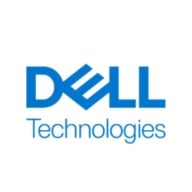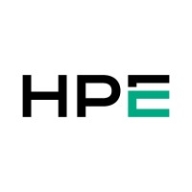

HPE NonStop and Dell PowerEdge MX-Series compete in the enterprise server market. HPE NonStop has an edge with unmatched reliability and continuous availability, while Dell PowerEdge MX-Series offers superiority in flexibility and modularity, appealing to businesses seeking adaptable infrastructure.
Features: HPE NonStop is known for its superior fault tolerance and continuous runtime capabilities, crucial for high-availability environments. It offers scalability via linear expandability, allowing doubled transactions with additional CPUs. Security is another key attribute, featuring multiple layers to protect data from unauthorized access. Dell PowerEdge MX-Series stands out with its modular design allowing seamless customization and expansion. It features centralized monitoring through its iDRAC tool, enhancing manageability and workload efficiency. The system is optimized for high-density environments through superior virtualization and containerization capabilities.
Room for Improvement: HPE NonStop can improve its ease of integration and reduce its steep learning curve associated with its specialized setup. Enhancing documentation and support for initial deployment could benefit new users. Another potential area is cost optimization to make it accessible for medium-sized enterprises. Dell PowerEdge MX-Series could enhance its cooling efficiency to address high-density deployment challenges. Additional out-of-the-box automation features would improve setup efficiency. While its services are generally satisfactory, enhancing technical support responsiveness could further elevate user experience.
Ease of Deployment and Customer Service: HPE NonStop's specialized architecture may lead to longer deployment times, requiring dedicated training, although it eventually assures robust performance. Dell PowerEdge MX-Series's modular infrastructure simplifies integration into existing setups, minimizing complexity. Both products provide strong customer service; however, Dell's focus on easy deployment enhances its adaptability for varying business needs.
Pricing and ROI: HPE NonStop requires significant upfront investment, justified by long-term return through minimized downtime. Its pricing structure might not be flexible, suiting larger corporations better. Dell PowerEdge MX-Series presents an affordable and scalable pricing model, aligning with business growth. Its ROI potential is strong due to adaptability to technological advancements without major upgrades, offering an enticing proposition for dynamic enterprises.
| Product | Market Share (%) |
|---|---|
| Dell PowerEdge MX- Series | 14.7% |
| HPE NonStop | 4.6% |
| Other | 80.7% |


| Company Size | Count |
|---|---|
| Small Business | 12 |
| Midsize Enterprise | 3 |
| Large Enterprise | 10 |
| Company Size | Count |
|---|---|
| Small Business | 4 |
| Midsize Enterprise | 3 |
| Large Enterprise | 7 |
Dell PowerEdge MX-Series servers excel in high-density, high-performance computing, ideal for modular environments requiring efficient rack-scale solutions. They optimize space, power, and cooling while offering scalable architecture for diverse, demanding workloads.
PowerEdge MX-Series offers unmatched efficiency in high-performance computing infrastructures, leveraging a disaggregated architecture in the IR7000 rack. This approach separates power and cooling from nodes, enhancing flexibility and serviceability for AI, HPC, and large-scale virtualization. Featuring the latest processors and advanced interconnects, it supports robust scalability and superior performance, driving businesses to modernize their infrastructure confidently.
What are the standout features?Dell PowerEdge MX-Series is extensively employed for virtualization, data center consolidation, and hyper-converged infrastructures. Widely adopted for storing virtualization on blade servers and handling compute tasks, it is a trusted foundation for diverse workloads like private clouds and scientific computing. Notably effective for data logging in solar power plants and delivering scalable infrastructure where compute and processing speed are critical, without dependence on traditional virtualization platforms.
We monitor all Blade Servers reviews to prevent fraudulent reviews and keep review quality high. We do not post reviews by company employees or direct competitors. We validate each review for authenticity via cross-reference with LinkedIn, and personal follow-up with the reviewer when necessary.